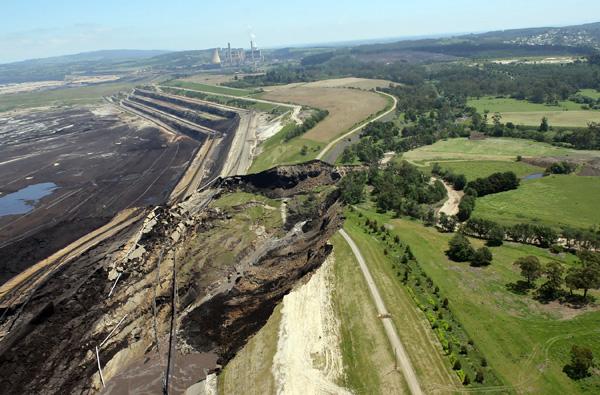Introduction to Coal | Coal as a Fuel|Coal Affects History| Coal Mining and Effects| Environmental Effects| History Affects Coal|References|
Coal Mining
-
Contamination of Ground water systems: When coal surfaces are exposed to the elements the FeS2 (also known as pyrite and fools goal) on the coal surface then reacts with water to create sulfuric acid. Once the water drains from the mine the acid enters waterways and groundwater systems. This is not a onetime event either. Sulfuric acid will be produced every time rain falls on the exposed mine.
-
Destruction of above ground structures: Collapses of mines have caused major damage to infrastructure in the surrounding areas. Occasionally, houses and other buildings can sink into the ground mandating the relocation of anywhere from one or two families to a small town. Additionally, mine collapses of significant size have on occasion caused small earthquakes. In 2008, Germany suffered an earthquake that registered 4.0 on the Richter scale as the result of a suspected mine collapse.
-
Damps: The hazardous gasses that build up in the mine often contain greenhouse gasses (example: methane, carbon dinoxide) that contribute to global warming.
Combustion of Coal
The harmful impacts of burning coal are a result of the gasses that are produced as a result of the combustion reaction. These products are principally oxides of carbon, nitrogen, and sulfur some of which are greenhouse gasses. However, additional products also include hydrides and nitrides of sulfur and oxygen. Examples include toxic gasses such as hydrogen cyanide.
-
Acid Rain: Acid rain may be produced from SO2 synthesized as a result of burning coal. The SO2 reacts with oxygen in the atmosphere to form SO3 (2SO2 + O2 → 2SO3). The SO3 in turn reacts with the water in the atmosphere to produce sulfuric acid (SO3 + H2O → H2SO4), which falls to the earth as acid rain.
-
Other hazardous waste products: the waste products of coal plants include many heavy metals (examples: As, Pb, Hg, Cr, Cu) as well as several naturally occurring radioactive such as uranium. If not properly disposed these byproducts pose severe risks to people and the environment.


